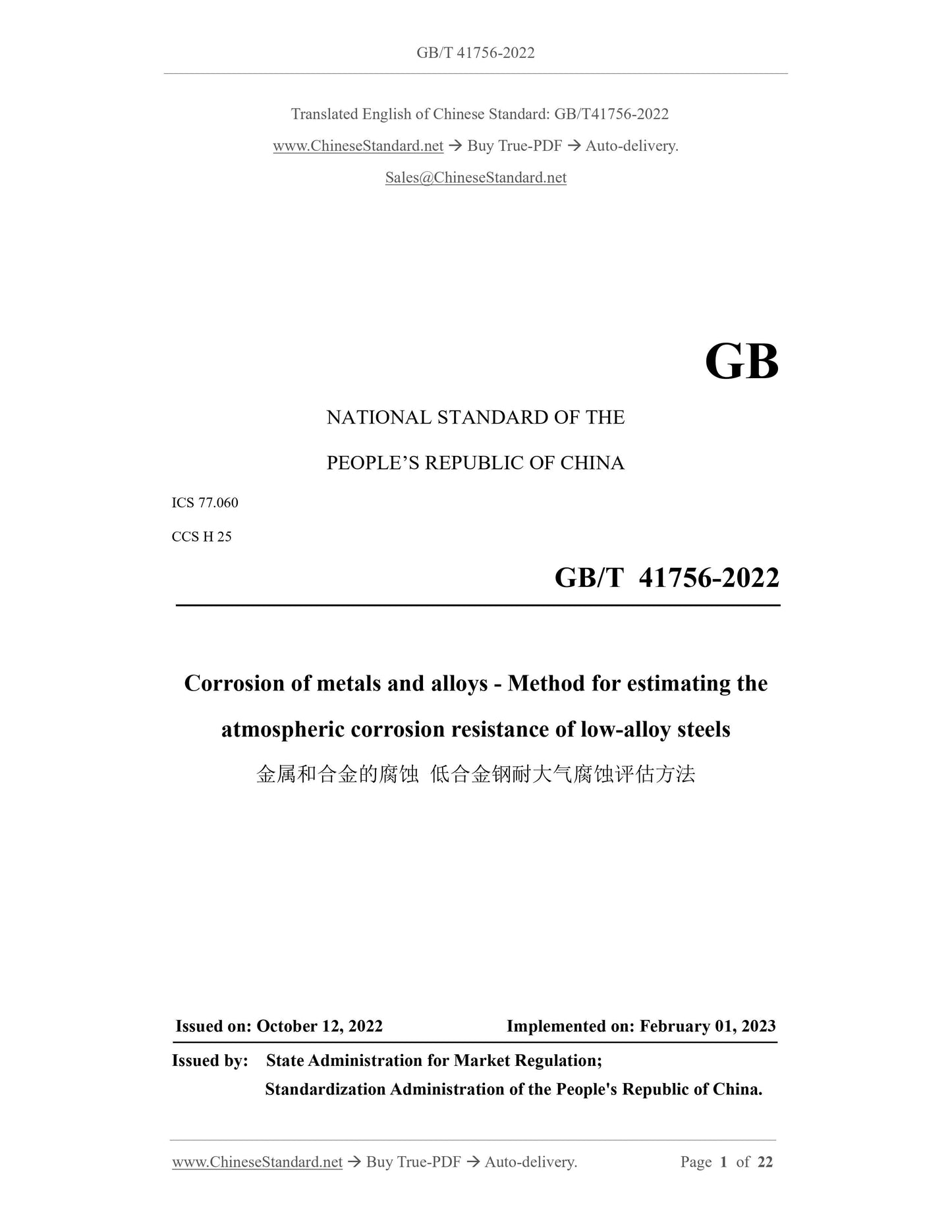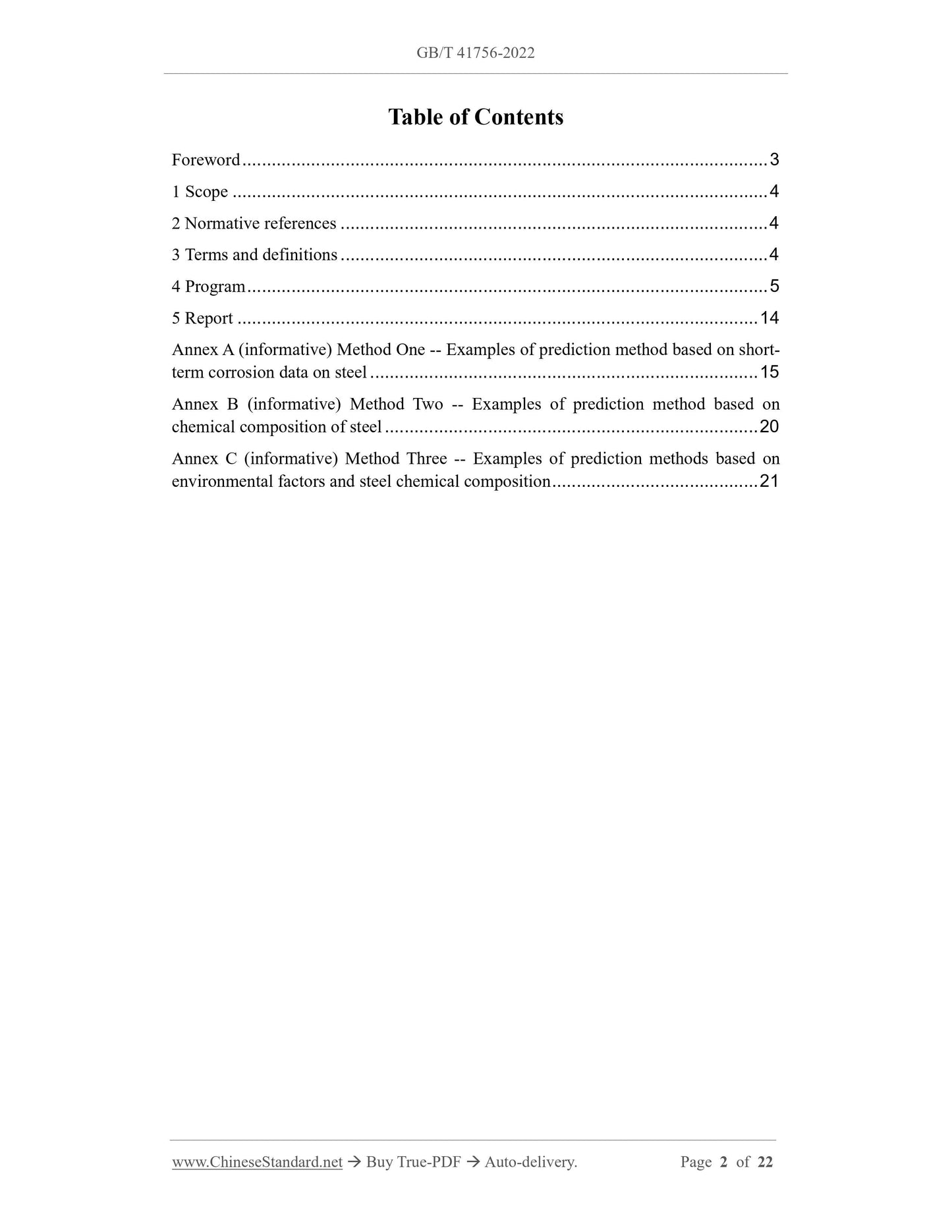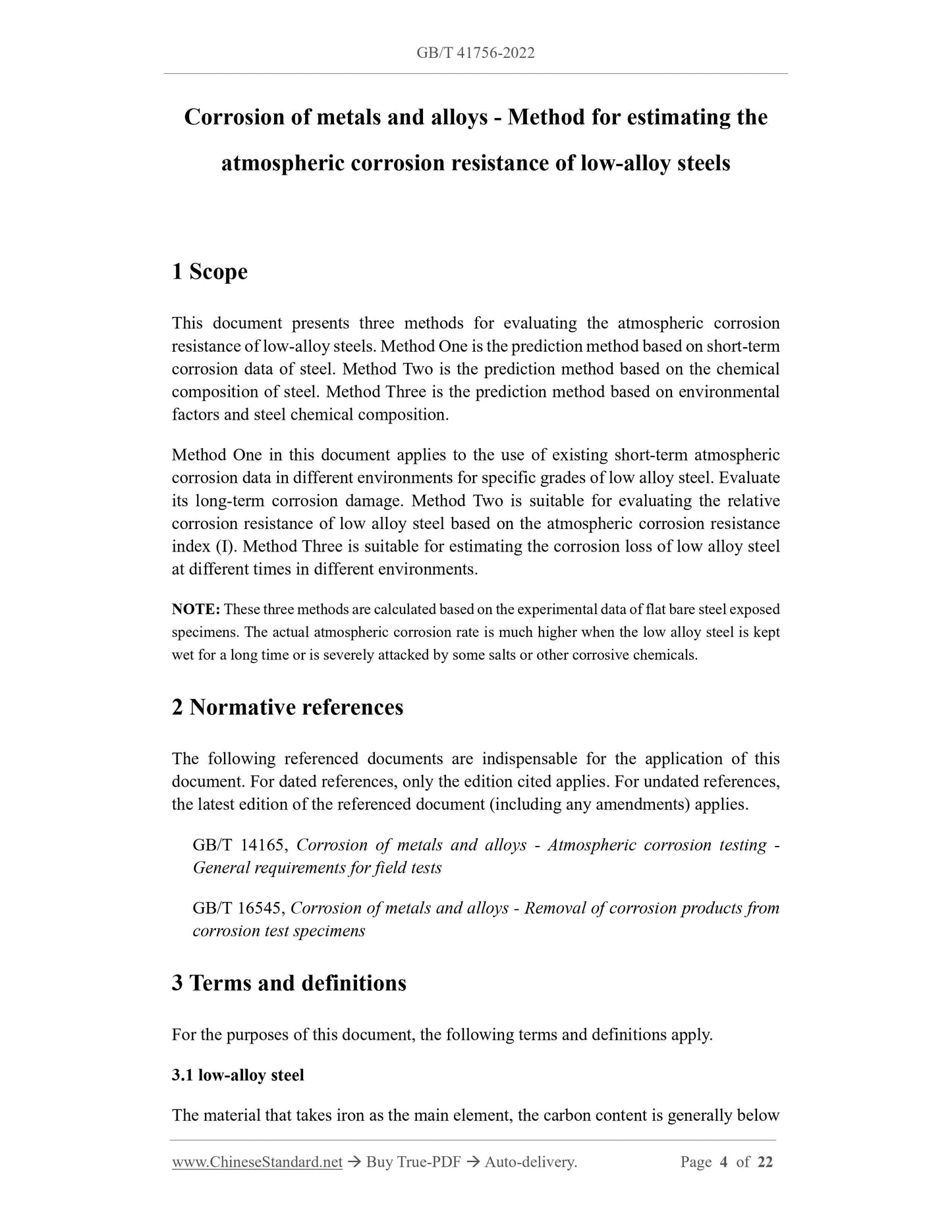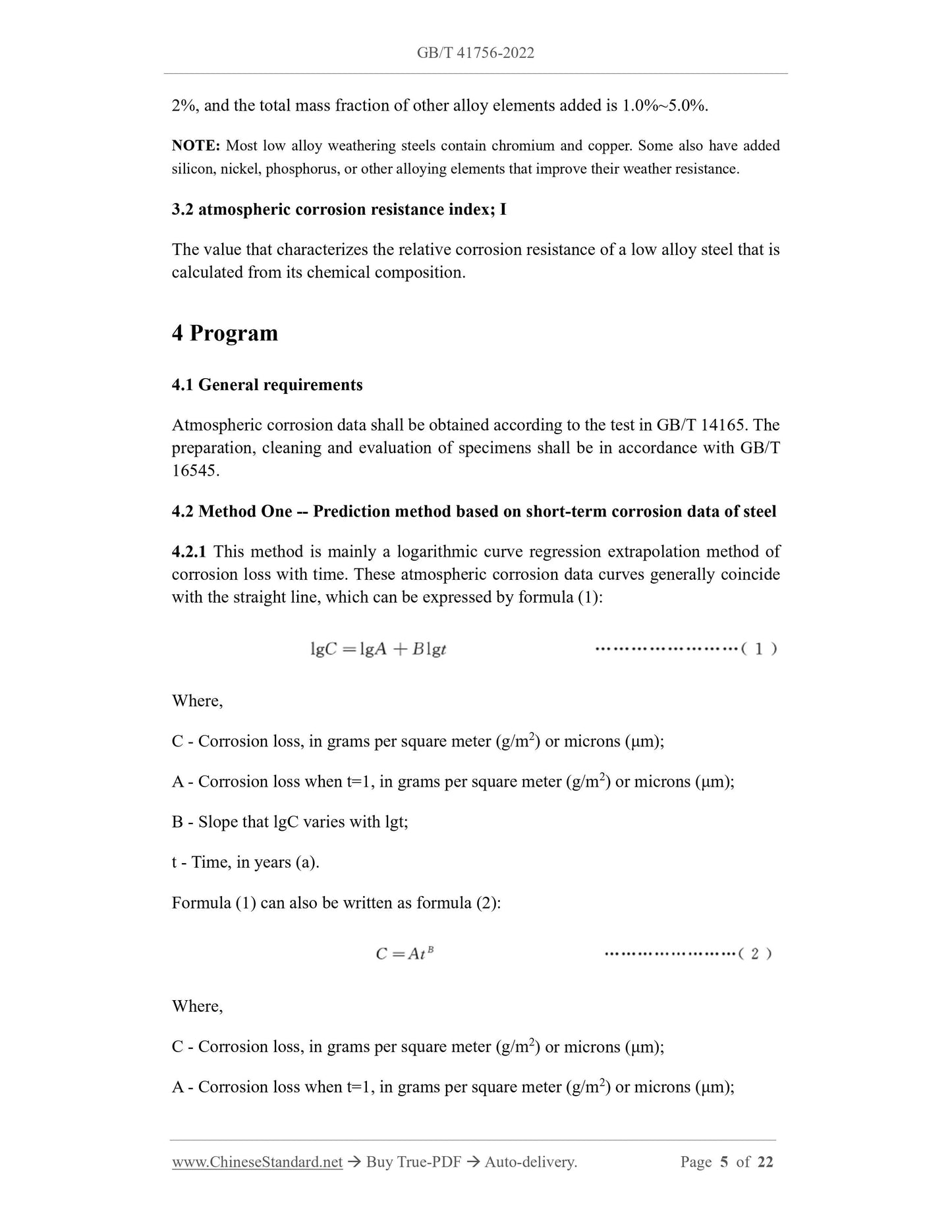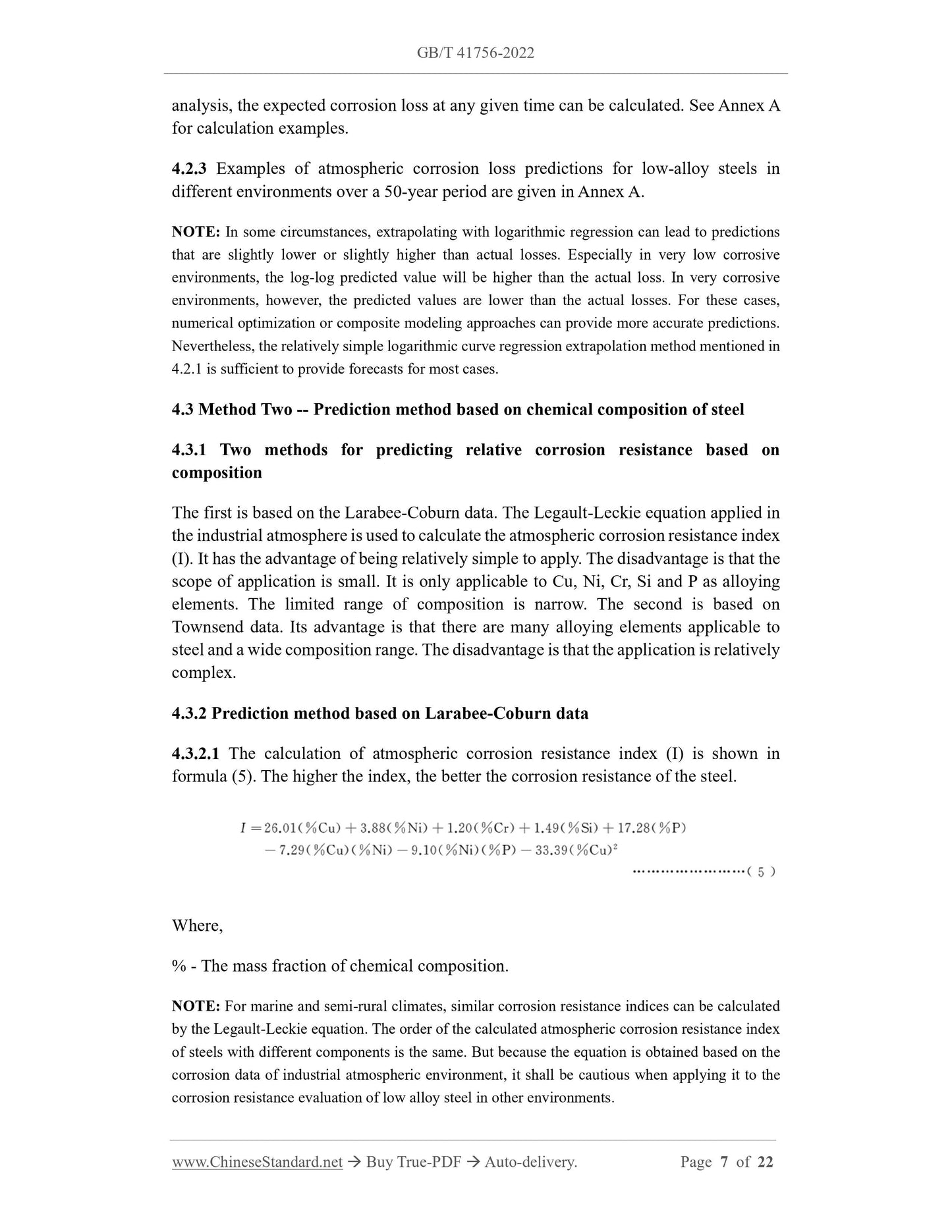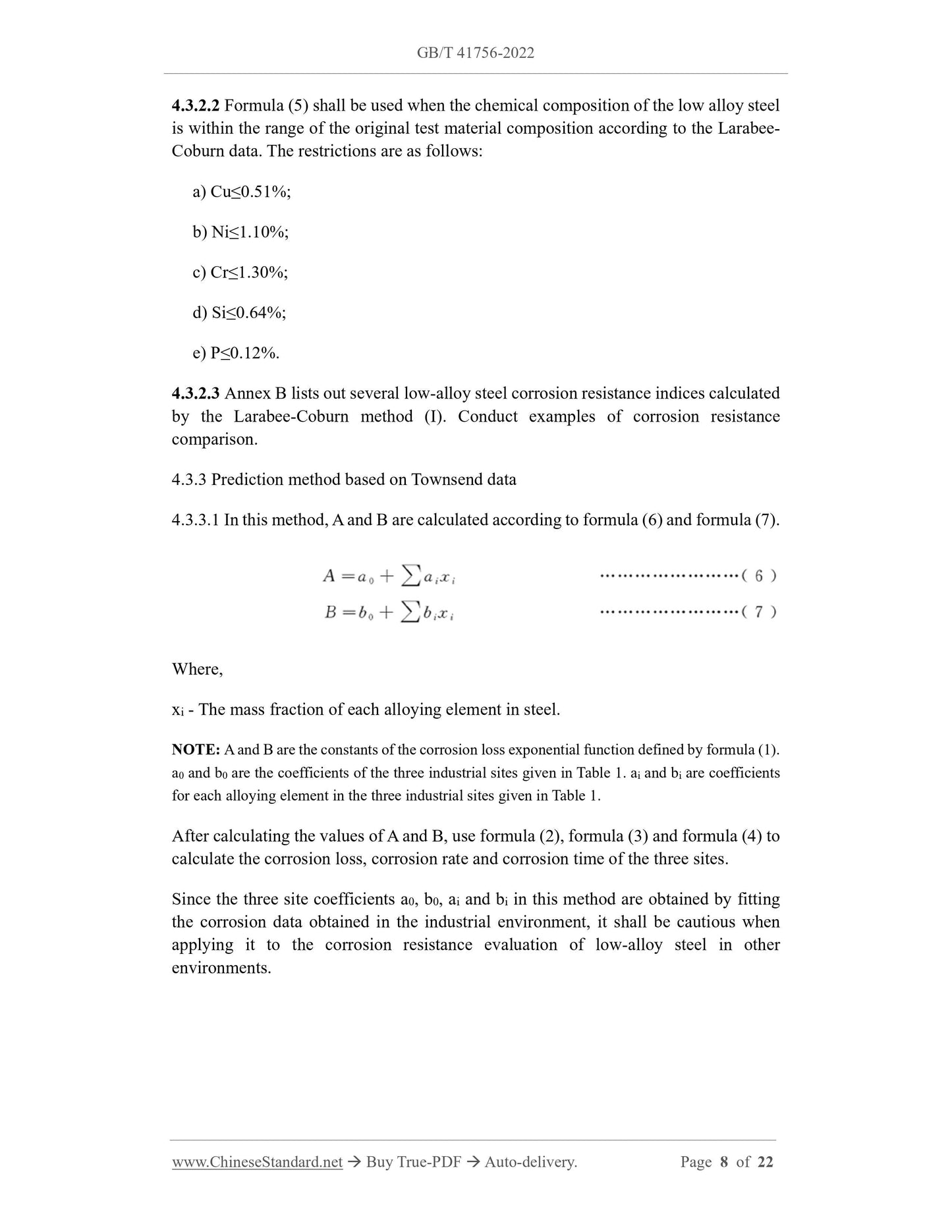1
/
of
6
www.ChineseStandard.us -- Field Test Asia Pte. Ltd.
GB/T 41756-2022 English PDF (GB/T41756-2022)
GB/T 41756-2022 English PDF (GB/T41756-2022)
Regular price
$260.00
Regular price
Sale price
$260.00
Unit price
/
per
Shipping calculated at checkout.
Couldn't load pickup availability
GB/T 41756-2022: Corrosion of metals and alloys - Method for estimating the atmospheric corrosion resistance of low-alloy steels
Delivery: 9 seconds. Download (and Email) true-PDF + Invoice.Get Quotation: Click GB/T 41756-2022 (Self-service in 1-minute)
Newer / historical versions: GB/T 41756-2022
Preview True-PDF
Scope
This document presents three methods for evaluating the atmospheric corrosionresistance of low-alloy steels. Method One is the prediction method based on short-term
corrosion data of steel. Method Two is the prediction method based on the chemical
composition of steel. Method Three is the prediction method based on environmental
factors and steel chemical composition.
Method One in this document applies to the use of existing short-term atmospheric
corrosion data in different environments for specific grades of low alloy steel. Evaluate
its long-term corrosion damage. Method Two is suitable for evaluating the relative
corrosion resistance of low alloy steel based on the atmospheric corrosion resistance
index (I). Method Three is suitable for estimating the corrosion loss of low alloy steel
at different times in different environments.
NOTE: These three methods are calculated based on the experimental data of flat bare steel exposed
specimens. The actual atmospheric corrosion rate is much higher when the low alloy steel is kept
wet for a long time or is severely attacked by some salts or other corrosive chemicals.
Basic Data
| Standard ID | GB/T 41756-2022 (GB/T41756-2022) |
| Description (Translated English) | Corrosion of metals and alloys - Method for estimating the atmospheric corrosion resistance of low-alloy steels |
| Sector / Industry | National Standard (Recommended) |
| Classification of Chinese Standard | H25 |
| Classification of International Standard | 77.060 |
| Word Count Estimation | 18,170 |
| Date of Issue | 2022-10-14 |
| Date of Implementation | 2023-02-01 |
| Issuing agency(ies) | State Administration for Market Regulation, China National Standardization Administration |
Share
